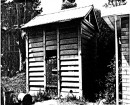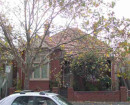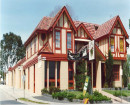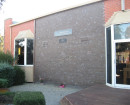KARORI
106 DEVONSHIRE LANE MOUNT MACEDON, MACEDON RANGES SHIRE
-
Add to tour
You must log in to do that.
-
Share
-
Shortlist place
You must log in to do that.
- Download report
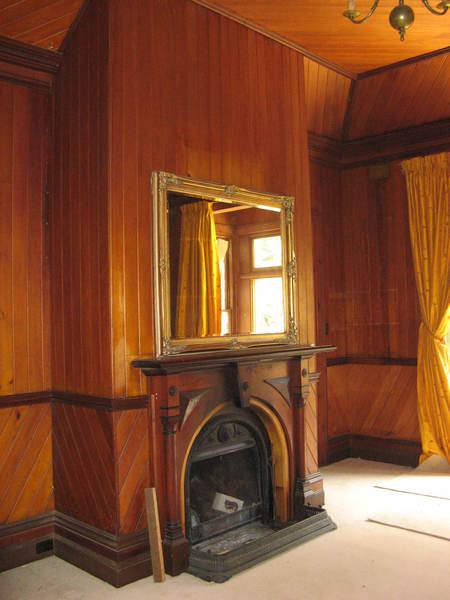

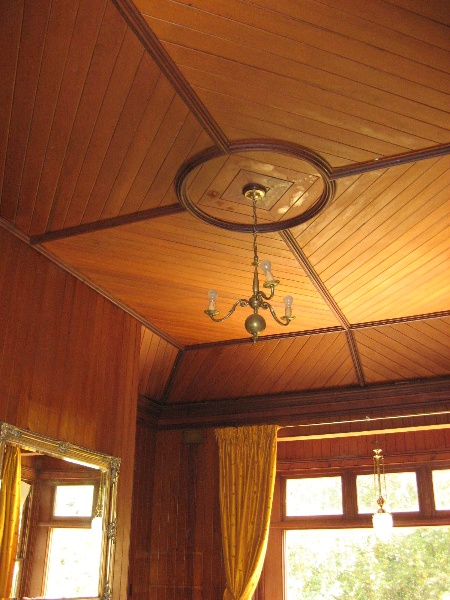
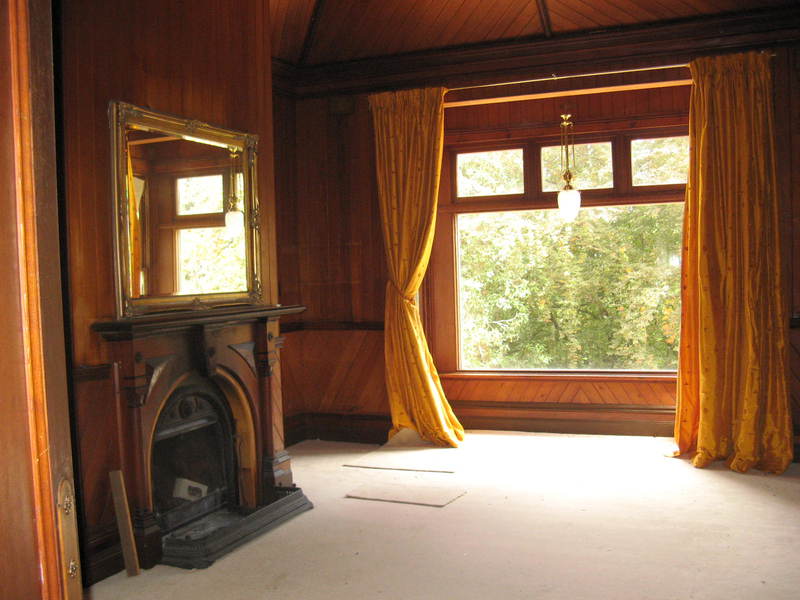
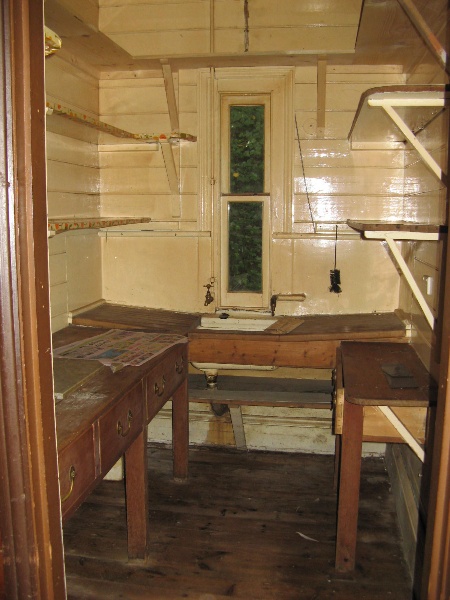
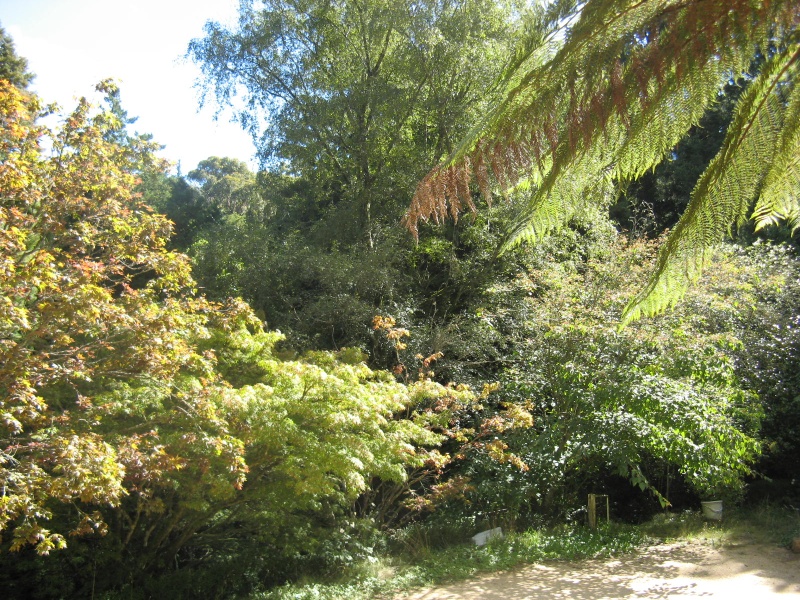
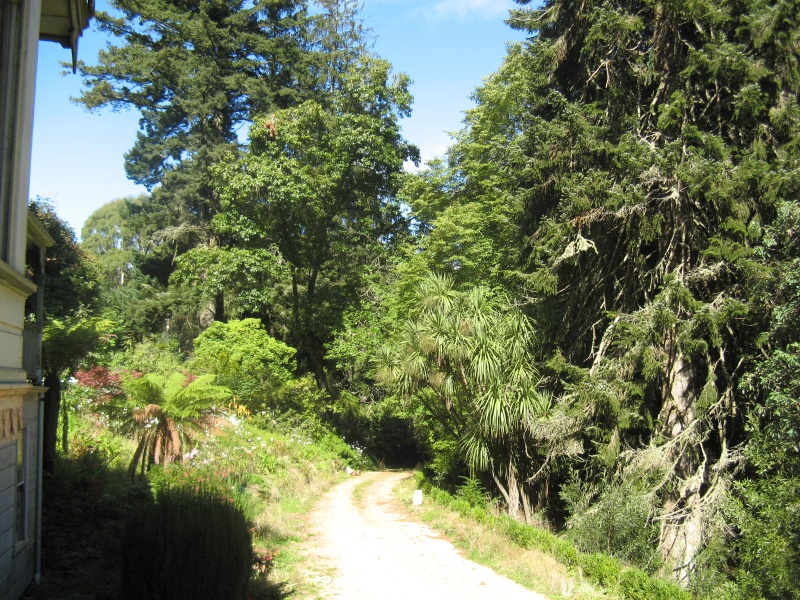
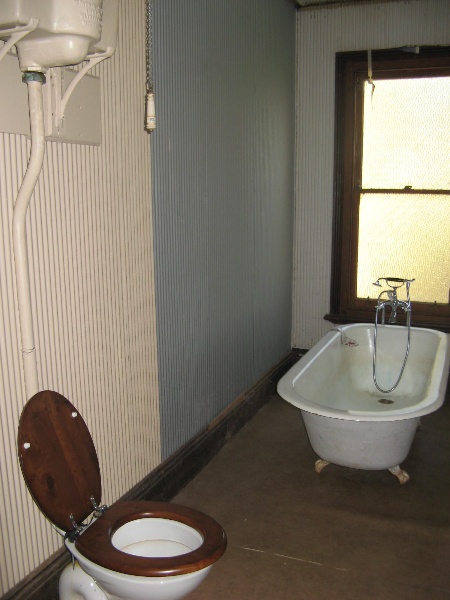
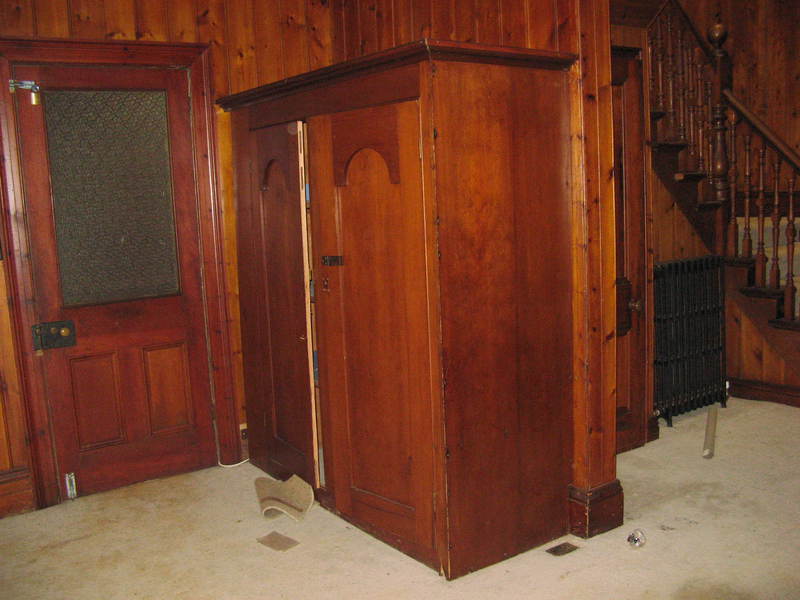
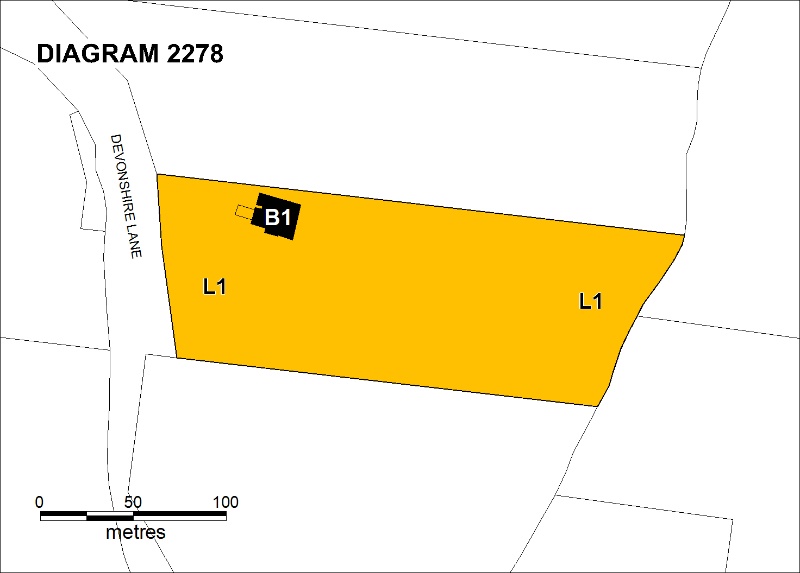
Statement of Significance
What is significant?
Karori is a six acre (2.4 hectare) hill station property on Turitable Creek on the steep southern slopes of Mount Macedon, with a picturesque timber house set amidst an extensive garden. The house was built as a summer retreat in 1888 by Charles William Chapman (1844-1929), a mining and pastoral investor who was originally from New Zealand but who had extensive business interests in Australia. He brought from New Zealand the Italian-born architect Louis Boldini (c1828-1908), who migrated to New Zealand and practised during the 1880s in Dunedin, where he designed a number of major buildings. Boldini designed Chapman's new house, which was given a Maori name, and in 1889 also designed in a similar picturesque style the nearby guest house, Braemar House (VHR H2003), in which Chapman had a financial interest. Karori was advertised for sale in 1898 as 'the well-known Italian villa' in 'one of the prettiest gullies in Victoria', with the grounds 'laid out into lawns, shrubberies, flower, fruit and vegetable gardens'. The property was bought by the Melbourne wool buyer Toussaint Dewez, who made some minor additions to the house in c1904, and it remained in the family until 1962. The Dewez family developed the garden with the assistance of three full-time gardeners and added a number of North American trees. The property was acquired in 1972 by Dr Robert Harbison and his wife Thelma, both prominent Mount Macedon identities, who extended the service wing and made other alterations to the house, and introduced many exotics trees, mostly from New Zealand. The 1983 bushfires, which destroyed many of the old Mount Macedon properties, damaged parts of the garden and destroyed the stables, a laundry, a glass house and a gardener's cottage.
Karori is a timber building in a picturesque Swiss cottage style, which was considered an appropriate choice for British colonial hill station residences in the nineteenth century. It has a square tower above the main entrance, which is at the first floor level. The house is notable for the intricate carved timber decoration, especially in the gable ends and at the base of the tower. It has an unusual H-shape plan, with a two-storey front section, containing bedrooms on the ground floor and living rooms and bedrooms on the first floor, connected by a passage at the first floor level to a single storey service wing at the rear. The timber theme is continued into the interior, with Kauri pine lining the main rooms and Baltic pine the other rooms. The interiors are largely intact, with original timber fireplaces and built-in cupboards, and the original scullery and bathroom, which is lined with narrow-gauge corrugated iron. The garden is terraced with stone walls, and has many rare and exotic trees, including weeping elms, a huge monkey puzzle, cryptomeria, silver birch, Tasmanian waratahs and sycamores. In one part of the garden there is a younger stand of Douglas Fir, large rhododendrons, Lawson Cypress, tulip trees and purple copper beeches. These massive trees are backed by towering eucalypts, while in the flower beds there are masses of spring flowering bulbs, hellebores and lily of the valley. In one area a huge Giant Redwood towers over the smaller trees and there is a cluster of silver poplars, variegated hollies, New Zealand hop bush, an Algerian oak and a sugar maple. Along the drive are flowering currants, Irish strawberry, a huge New Zealand griselinia, and there is a bank of native bush in the gully. There are outstanding specimens of a Douglas fir (Pseudotsuga menziesii) and a Tasmanian leatherwood (Eucryphia lucida).
This site is part of the traditional land of the Wurundjeri people.
How is it significant?
Karori is of architectural, historical, aesthetic, and scientific (botanical and horticultural) significance to the state of Victoria.
Why is it significant?
Karori is of historical significance as an outstanding example of the summer retreats built on the southern slopes of Mount Macedon in the nineteenth century. The residence and its garden setting evoke the lifestyle of wealthy Victorians at the time. It is an integral component of the surviving Mount Macedon precinct of hill station properties, developed by some of the state's most prominent and wealthy citizens in the late nineteenth and early twentieth centuries and damaged by catastrophic bushfires in 1983. It is significant for its association with the original owner, Charles William Chapman, who was prominent in the pastoral and mining industries.
Karori is of architectural significance as a rare and intact example of a nineteenth century residence in a picturesque style traditionally associated with British colonial hill stations. It is significant for its association with the Italian-born architect Louis Boldini, who came from New Zealand in 1888 to design the house, and later designed the outstanding Mount Macedon guest house Braemar House in a similar style.
Karori is of aesthetic and scientific (botanical and horticultural) significance as an outstanding example of a hill station garden. These gardens were built on a grandiose scale, unequalled anywhere in Australia. Karori is one of the major gardens on Mount Macedon, which has one of the most important collections of large nineteenth century gardens in the country. It contains a notable collection of conifers and deciduous cool climate plants, especially North American and New Zealand species.
-
-
KARORI - History
CONTEXTUAL HISTORY
The land around Mt Macedon was first sold in 1854: twelve allotments each of a hundred acres, the lots to the west all bisected by Turitable Creek (on which Karori was later built). Further subdivision into four or five acre lots formed the basis of the then Mount Macedon village. The original homes on Mt Macedon were built to enable the owners to avoid Melbourne's hot summers, but many were permanent residences. After the railway line reached Macedon in 1861, professional men were able to commute to their city offices. By the 1880s Mt Macedon had become a fashionable summer retreat for Melbourne's scientific, academic and legal gentlemen and their families and servants.
Most of the fashionable houses were built on the southern slopes of the mountain, as this area was always cool at night and had small mountain streams running through. Conditions were ideal for gardens, and the gardens at Duneira, Cameron Lodge, Alton, Hascombe, Ard Choille, Karori and Durrol were established in the higher parts of the mountain in the nineteenth century, and later many more. The gardens at Mt Macedon represent one of the most important collections of nineteenth century gardens in Australia
The original owner: Charles William Chapman (1844-1929)
Chapman was born in Wellington, New Zealand, the son of the noted lawyer, politician and judge, Henry S Chapman. In 1852 the family left for Van Diemen's Land, where his father was appointed colonial secretary, but began practising at the Victorian Bar in 1854 and was elected to the Legislative Council in 1855. Charles was one of the foundation pupils of the Melbourne Grammar School, but returned to New Zealand in 1864 with his family, and married Flora Barbour c1867 before returning to Victoria. He had pastoral interests, but in 1878 was attracted to Bendigo by a gold boom, and became secretary of an ore-treating company. While studying at the Bendigo School of Mines he met Sir John Higgins, who became his friend and business partner for more than fifty years, in ventures throughout northern Australia and the Solomon Islands. He later purchased the Cascade Brewery in Hobart. Returning to Melbourne during the silver boom of the late nineteenth century he entered the firm of Chapman & Wakley, which floated many of the silver-lead companies in Australia, at Broken Hill and in South Australia. He later acquired pastoral properties in Queensland and NSW, selling out from 1910, when he retired.
The architect: Louis Boldini (c1828-1908)[From Marion Hutton et al, The Story of Braemar House 1890-1990, Woodend 1992, pp 14-15.]
Louis Boldini was born in 1828 in Italy at Temara, a small village in the province of Ferrara between Padova and Bologna. Nothing is known of his work in Italy. He migrated to New Zealand in about 1876, moved to Dunedin in about 1880 and practised there until 1888, designing a number of large commercial and public buildings. These included the AMP offices (since demolished), the Dunedin Synagogue (1880-2), and the Renaissance revival Grand Hotel (now the Southern Cross Hotel) (1883), thought to have been the most lavish hotel in New Zealand at that time, and for which he is best known. The Dunedin boom years appear to have been from 1876 to 1885, when work began to slow down and many architects and tradesmen moved overseas. His move to Victoria may have been at the instigation of Charles Chapman, a broker in New Zealand, for whom he was to design Chapman's house at Mt Macedon in 1888. He also designed the timber Braemar House at Mt Macedon, built in 1890. Boldini practised first at Broken Hill Chambers, 372 Flinders Lane, and later at 386 Flinders Lane. In 1895 he was living and practising in Maldon, where he died in 1908.
HISTORY OF PLACEKarori was designed by the architect Louis Boldini and built in 1888 by a Mr Landsdowne (according to the Kyneton Guardian 22 December 1888) for Charles W Chapman, the noted metallurgist and investor.
The land now known as Karori was purchased from the Crown in early 1880 by James Morton of Footscray, a surgeon, who sold it in 1882. In 1884 it was purchased by Dr Duncan Turner, who owned the adjoining property The Chalet, and sold the Karori block to Charles Chapman in the late 1880s. Dr Turner was in charge of the sanatorium at Mt Macedon and strongly advocated the health benefits of the cooler climate of Mt Macedon. He was the main inspiration for establishing the nearby guest house Braemar, which was also designed by Boldini, a year after Karori. Chapman was also involved in the syndicate.Chapman was rated for a villa and 6 acres at Upper Macedon which was assessed at the start of 1889 as 30 pounds nett annual value. By January 1890 this valuation had doubled, indicating slow completion. The date December 1888 is written on the internal lining of the tower, which suggests that much of the original house may have been built by then.
Karori is a residential suburb of Wellington, New Zealand, and is a Maori word said to mean 'the rope of the snares'.
Korori was advertised for sale in the Argus of 2 November 1898, when it was described as being on about 7 acres of land,upon which is erected the well-known Italian villa . containing eight living rooms, bathroom, kitchen, scullery, servants' rooms, washhouse, fitted with all modern conveniences, stabling coachhouse, together with all the household furniture, &c., and pair of ponies.
The grounds are laid out into lawns, shrubberies, flower, fruit and vegetable gardens. The Turitable Creek passes through the property, forming one of the prettiest gullies to be found in Victoria.
This property is situated on one of the finest sites on the mount, between Dr. Turner and Mr. Gordon, [with] a most extensive view of the surrounding country. It has its own water supply, and a plant for making gas.
Both blocks were sold to the Melbourne wool buyer Toussaint V Dewez (of Ostermeyer Dewez & Van Ronepaey), who was originally from Belgium. According to the nominator the house was extended by the Dewez family in about 1904. They extended the roof at the west end and incorporated the west balcony into a larger living room. Dewez remained there until he died in 1928, leaving the house to his sons Gustave, who managed the family's business interests in Sydney, and Toussaint (known as Tue), who managed the Melbourne side. Gustave later married Mary Reid of Duneira. The Dewez family owned it until 1962. A descendant records that
Uncle Tue travelled to Europe on business probably each second year .. Returning home via America and Canada. Tue used to collect seedling trees such as Douglas fir and other conifers growing in the Rockies, and tend them carefully on board ship crossing the Pacific. Arthur said he used iced water to keep them cool and fresh. These he planted at Karori on his return and he derived much quiet satisfaction from seeing them grow in succeeding years. My aunt had one large bank on the east side of the house devoted to growing colourful flowers and further east and higher up, a large vegetable garden with large vines of raspberries and gooseberries. The gardener used to milk one or two Jersey cows, milk being set in cool rooms set into the steep hillside behind the house, and the cream skimmed off with a special spoon. They kept three ponies in a long narrow paddock below the drive . They had a grass tennis court which was improved when two enormous pine trees shading it were removed.
After 1962 it was for eleven years owned by the Bells (no information is known about them), before being acquired by the Harbisons in 1972. Dr Robert Harbison was a member of the Committee of Management of the Mount Macedon Memorial Cross and after whom the Harbison Picnic Ground in the Macedon Regional Park is named, and Mrs Thelma Harbison was a member of the Trustees of the Memorial Cross. During their ownership they fought two major bushfires, on 1 and 16 February 1983, which extensively damaged parts of the garden and destroyed the stables, but the house remained intact. They made alterations to the house, including extending the service wing and enclosing the spaces between the service and main wings. In 1977 it was noted that there were stables and a laundry, a glasshouse and a gardener's cottage, and seven and a half acres of garden, but the outbuildings were destroyed in the 1983 fires. 'Two Italians' had carried out extensive rock work in the garden. There were originally three full-time gardeners, one of them resident on the property.The garden
The garden was originally planted by Chapman around 1890. He is said to have planted a number of New Zealand specimens.
The entry for Karori in Grand Gardens of Mount Macedon describes it thus:
Extensive stonework by Italian craftsmen for terracing of the steep slope made this a feature of a very attractive garden with a sweeping lawn. Many rare and exotic trees grow in the grounds, including weeping elms, a huge monkey puzzle, tall cryptomerias, silver birch, Tasmanian waratahs and sycamores. In one part of the garden there is a younger stand of Oregon, large rhododendrons, Lawson cypress, tulip trees, purple copper beeches with three oregons near the grass tennis court. These massive trees are backed by towering eucalypts, while in the flower beds there are masses of spring flowering bulbs, hellebores and lily of the valley. In one area a huge wellingtonia towers over the smaller trees and there is a cluster of silver poplars, variegated hollies, New Zealand hop bush, a Lusitanic oak (half deciduous) and a sugar maple. Along the drive there are flowering currants, Irish strawberry, a huge griselinia and a bank of native bush in the gully. A rare New Zealand waratah flowers all the year round while in a quiet ferny gully a small mountain stream wends its way through the property.
As noted above, a number of North American specimens were planted during the Dewez ownership, while the Harbisons introduced many more exotic trees, mostly from New Zealand.
A Douglas fir (Pseudotsuga menziesii) and Tasmanian Leatherwood (Eucryphia lucida) in the garden are included in the National Trust Register of Significant Trees.
KARORI - Assessment Against Criteria
a. Importance to the course, or pattern, of Victoria's cultural history
Karori is of historical significance as an outstanding example of the summer retreats built on the southern slopes of Mount Macedon in the nineteenth century. The residence and its garden setting evoke the lifestyle of wealthy Victorians at the time. It is an integral component of the surviving Mount Macedon precinct of hill station properties, developed by some of the most prominent and wealthy citizens of Victoria in the late nineteenth and early twentieth centuries and damaged by catastrophic bushfires in 1983.
b. Possession of uncommon, rare or endangered aspects of Victoria's cultural history.
c. Potential to yield information that will contribute to an understanding of Victoria's cultural history.
d. Importance in demonstrating the principal characteristics of a class of cultural places or environments.
Karori is a rare and intact example of a nineteenth century hill station residence in a picturesque style traditionally associated with British colonial hill stations. It is an outstanding example of a hill station garden, which were built at Mount Macedon on a scale unequalled anywhere in Australia.
e. Importance in exhibiting particular aesthetic characteristics.
Karori is one of the major nineteenth century gardens on Mount Macedon, which has one of the most important collections of large nineteenth century gardens in Australia. It contains a notable collection of cool climate plants, especially North American and New Zealand species.
f. Importance in demonstrating a high degree of creative or technical achievement at a particular period.
g. Strong or special association with a particular community or cultural group for social, cultural or spiritual reasons. This includes the significance of a place to Indigenous peoples as part of their continuing and developing cultural traditions.
h. Special association with the life or works of a person, or group of persons, of importance in Victoria's history.
Karori is significant for its association with the Italian-born architect Louis Boldini, who came from New Zealand in 1888 to design the house. It is significant for its association with the original owner, Charles William Chapman, who was prominent in the pastoral and mining industries in Australia.
KARORI - Plaque Citation
This outstanding nineteenth century hill station garden, with a picturesque timber house designed in 1888 by the Italian-born architect Louis Boldini, was developed for the mining and pastoral investor Charles Chapman.
KARORI - Permit Exemptions
General Exemptions:General exemptions apply to all places and objects included in the Victorian Heritage Register (VHR). General exemptions have been designed to allow everyday activities, maintenance and changes to your property, which don’t harm its cultural heritage significance, to proceed without the need to obtain approvals under the Heritage Act 2017.Places of worship: In some circumstances, you can alter a place of worship to accommodate religious practices without a permit, but you must notify the Executive Director of Heritage Victoria before you start the works or activities at least 20 business days before the works or activities are to commence.Subdivision/consolidation: Permit exemptions exist for some subdivisions and consolidations. If the subdivision or consolidation is in accordance with a planning permit granted under Part 4 of the Planning and Environment Act 1987 and the application for the planning permit was referred to the Executive Director of Heritage Victoria as a determining referral authority, a permit is not required.Specific exemptions may also apply to your registered place or object. If applicable, these are listed below. Specific exemptions are tailored to the conservation and management needs of an individual registered place or object and set out works and activities that are exempt from the requirements of a permit. Specific exemptions prevail if they conflict with general exemptions. Find out more about heritage permit exemptions here.Specific Exemptions:General Conditions: 1. All exempted alterations are to be planned and carried out in a manner which prevents damage to the fabric of the registered place or object. General Conditions: 2. Should it become apparent during further inspection or the carrying out of works that original or previously hidden or inaccessible details of the place or object are revealed which relate to the significance of the place or object, then the exemption covering such works shall cease and Heritage Victoria shall be notified as soon as possible. General Conditions: 3. If there is a conservation policy and plan all works shall be in accordance with it. Note: A Conservation Management Plan or a Heritage Action Plan provides guidance for the management of the heritage values associated with the site. It may not be necessary to obtain a heritage permit for certain works specified in the management plan. General Conditions: 4. Nothing in this determination prevents the Executive Director from amending or rescinding all or any of the permit exemptions. General Conditions: 5. Nothing in this determination exempts owners or their agents from the responsibility to seek relevant planning or building permits from the responsible authorities where applicable.Landscape Maintenance:
* The process of gardening, mowing, hedge clipping, bedding displays, removal of dead plants and replanting the same species, disease, vermin and weed control, emergency and safety works and minor landscaping works to maintain the garden landscape.
* Removal of dead and dangerous trees which requires a list and plan to be submitted to the Executive Director.
* Removal of vegetation, fallen timber and fuel reduction as part of an agreed Fire Management Plan. Note that the Vegetation Clearance amendment VC61 (known as the 10/30 rule) does not apply to places on the VHR and a permit is required from the Executive Director.
* Replanting tree species to conserve the landscape character, conifer, elm, oak, and shrub plantings, provided a list and plan is submitted to the Executive Director for approval.
* Management of trees in accordance with Australian Standard: Pruning of amenity trees AS 4373.
* Vegetation protection and management of the possum population.
* Removal of plants listed as Prohibited and Controlled Weeds in the Catchment and Land Protection Act 1994.
* Repairs, conservation and maintenance to hard landscape elements, paths and roadways, stone and concrete edging, walls, fences and gates.
* Subsurface works involving services, drainage, water, gas or electricity beyond the canopy edge of significant trees and in accordance with Australian Standard: Protection of trees on development sites AS 4970
Minor Works : Note: Any Minor Works that in the opinion of the Executive Director will not adversely affect the heritage significance of the place may be exempt from the permit requirements of the Heritage Act. A person proposing to undertake minor works must submit a proposal to the Executive Director. If the Executive Director is satisfied that the proposed works will not adversely affect the heritage values of the site, the applicant may be exempted from the requirement to obtain a heritage permit. If an applicant is uncertain whether a heritage permit is required, it is recommended that the permits co-ordinator be contacted.KARORI - Permit Exemption Policy
The purpose of the Permit Policy is to assist when considering or making decisions regarding works to the place. It is recommended that any proposed works be discussed with an officer of Heritage Victoria prior to making a permit application. Discussing any proposed works will assist in answering any questions the owner may have and aid any decisions regarding works to the place. It is recommended that a Conservation Management Plan is undertaken to assist with the future management of the cultural significance of the place.
The extent of registration protects the whole site. The addition of new buildings to the site may impact upon the cultural heritage significance of the place and requires a permit. The purpose of this requirement is not to prevent any further development on this site, but to enable control of possible adverse impacts on heritage significance during that process.
-
-
-
-
-
ALTON
 Victorian Heritage Register H0874
Victorian Heritage Register H0874 -
Sequoiadendron giganteum (Lindl.) Buchholz
 National Trust
National Trust -
Sequoiadendron giganteum (Lindl.) Buchholz
 National Trust
National Trust
-
'Lawn House' (Former)
 Hobsons Bay City
Hobsons Bay City -
1 Fairchild Street
 Yarra City
Yarra City -
10 Richardson Street
 Yarra City
Yarra City
-
-




